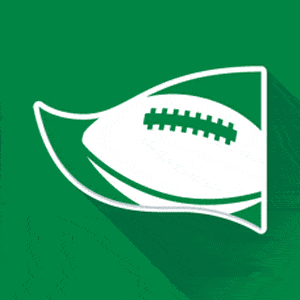
The Heisman Trophy winner is a superior athlete who often made it look like he was the only person on the field, weaving his way to big-time production (185 catches, 3,112 receiving yards and 37 receiving TDs over the past two seasons). Like Jefferson, Smith is a fluid route runner. I initially thought Jefferson would work primarily in the slot, but he ended up generating the majority of his yardage on the outside en route to breaking Boldin's record for rookie receiving yards. The two players also look nearly identical in terms of body type, with both checking in at 6-1 - except Smith is about 30 pounds lighter. But if Smith were to test, I would guess he'd put up very similar numbers to Jefferson (4.43 40, 37 1/2-inch vertical, 10-6 broad jump at the NFL Scouting Combine).
#FANTASY PRO PLAYER COMPARISON PRO#
Like Waddle, Smith did not run at Alabama's pro days. Pro comparison: Justin Jefferson, Minnesota Vikings (one NFL season, 88 catches, 1,400 receiving yards, seven TDs). Those numbers just scream Hill-esque big-play potential. But note his extremely healthy yards-per-catch mark of 18.9, including a whopping 21.1 figure in his healthy outings in 2020 - and note also Waddle's return ability (19.3 yards per punt return and 23.8 yards per kick return). Waddle had to split targets with Alabama's other premier receivers, including DeVonta Smith, Jerry Jeudy and Henry Ruggs. Watch Waddle slice through traffic or outsprint the field and tell me you don’t see echoes of Hill making defenders look silly. But based on the speed and talent he shows on tape, Waddle projects to me as sort of a Hill-in-waiting, a blazing-quick offensive force ready to become one of the next great receivers in the NFL. Waddle, who is recovering from a dislocated ankle that limited him to six games in 2020 (and which appears to be healing well), has not run or worked out this pre-draft season. Pro comparison: Tyreek Hill, Kansas City Chiefs (five NFL seasons, 73.6 catches per year, 1,078.2 receiving yards per year, 9.4 TDs per year) Chase, meanwhile, carries himself with the same verve, ranking seventh in contested-catch percentage (50%) among FBS receivers with 120-plus targets in 2019, per PFF - and he has the benefit of top-end speed and athleticism (6-0 3/8, 201, 41-inch vertical, 11-0 broad jump, 6.76 three-cone, 3.98 short shuttle). Looking at his pre-draft numbers (6-foot 5/8, 216 pounds, 33 1/2-inch vertical, 7.35 three-cone, 4.25 short shuttle), I'd say there was no way Boldin could have become the player he became. The thing is, Boldin used his strong hands and on-field moxie to outperform - by leaps and bounds - the ceiling suggested by his pedestrian measurables.

No wonder Chase, who opted out in 2020, led FBS with 46 explosive pass plays (those that went for 15-plus yards) in 2019, per Pro Football Focus. Chase shows a similar fearlessness on the field, whether he's out-muscling the opposition on a contested catch or ripping off extra yards. Check out this play from Boldin's record-setting rookie season a split second after pulling in a catch on the run, he's slammed by a pair of defenders, but instead of going down or losing his grip on the ball, Boldin shrugs off the contact and coasts into the end zone. Throughout his 14-season NFL career, Boldin simply would not be denied whenever the ball came anywhere near him. Set aside for a moment the fact that Chase (who ran 4.34-second 40-yard dash at LSU's pro day) is much faster than Boldin was (4.73 40 at the NFL Scouting Combine).

Pro comparison: Anquan Boldin (14 NFL seasons, 76.9 catches per year, 948.2 receiving yards per year, 6 TDs per year)


 0 kommentar(er)
0 kommentar(er)
